SockMonkey
Makin' Some Noise
Jeez, Eric. Where've you been going to get your oysters lately, Tillamook Bay..? :lol:... wading through all the poo to find the pearls...

Jeez, Eric. Where've you been going to get your oysters lately, Tillamook Bay..? :lol:... wading through all the poo to find the pearls...
That and a worn out set of PR2s.a good photo rich tech write up practically gives him wood.
Damn, bro....wish I was closer.Here's an update on the APE front...
I got a call from the nice people at American Performance Engineering (APE). They have the first Manual Cam Chain Tensioner fabricated but not anodized yet. I should be getting it later this week (UPS) to try in my bike. They want to check form, fit, and function before they go into production. My bike will be down well into next week due to the painters, but I can bolt it up and see how well it fits in the tight space.
When it gets in, I would also like to try fitting it on a first generation FJR. If anyone near by is interested in helping out the cause, send me a PM. Perhaps we can temporarily install it on your bike to see how it works out. It will just be for a short time, I will need to send that unit back.
It's getting close! :clapping:
Brodie
Milpitas, California
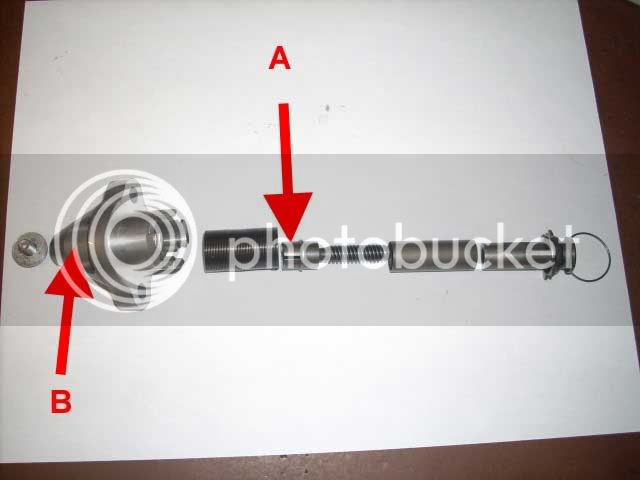
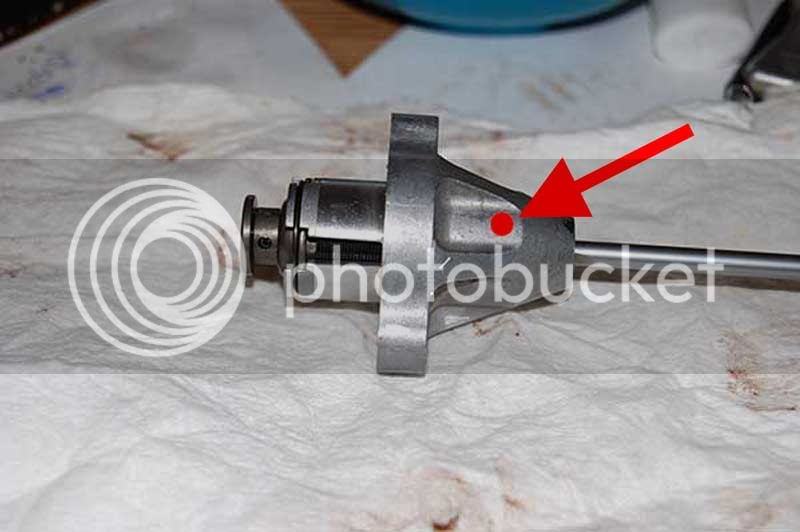










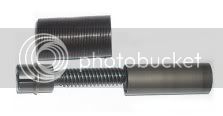
Doesn't the spring go over the part A when installed? How would the set screw make contact with part A?
Or would you be tossing the spring altogether?
One attribute for a manual CCT would be a fairly fine pitch thread to make small adjustments in length easier. The stock "thread" look very course.
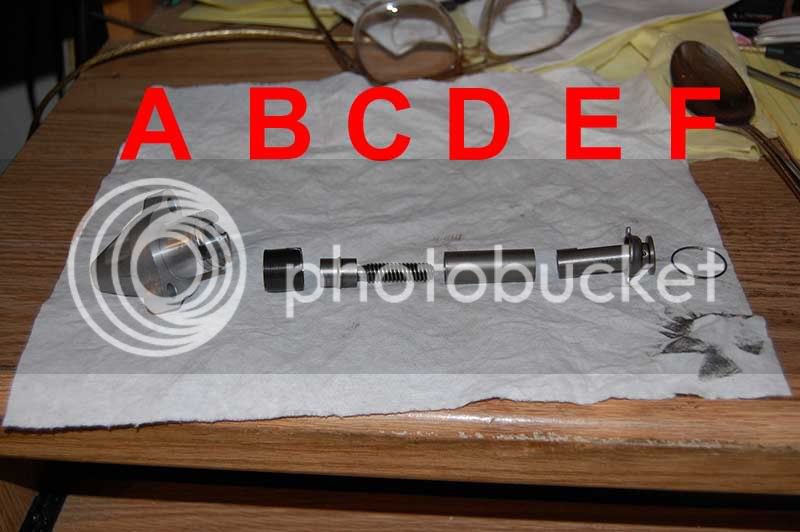
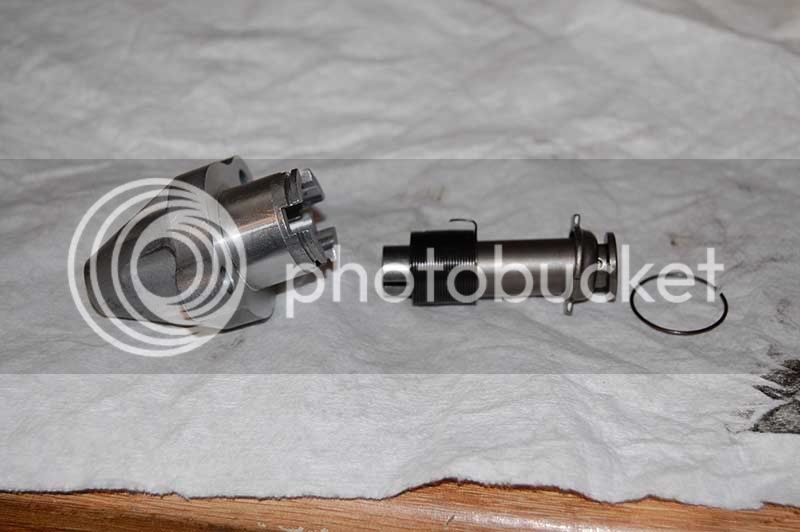
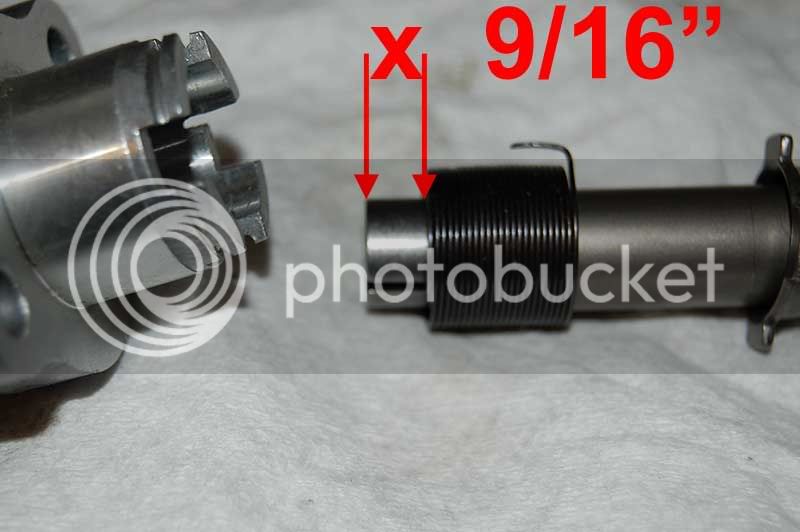

I'd say it serves more of a purpose to keep oil in, rather than dirt out.Another reason to use a new housing, specifically designed to function as a manual CCT is that stinkin' bolt that plugs the end of the OEM CCT. I assume it keeps dirt from getting in and is needed even if you convert the CCT to manual.
Absolutely correct. The APE unit, as shown on their website and various places around here, certainly adheres to the K.I.S.S. principle. No doubt about it. Elegant in its simplicity.An after market manual CCT should be adjustable by just using a screwdriver or hex key or whatever, no need to remove a small plug, drop it inside the frame, fish it out, repeat.
Again, couldn't agree more. Probably fit right in from the top, under the TPS, rather than wrestling in from underneath and having to remove the idle adjuster mechanism.The APE CCTs also look a lot smaller than the OEM, so it should be easier to install.
I'm looking forward to BUYING an APE unit.I am looking forward to seeing some pictures of the APE unit.
Probably NOT any more secure or reliable. Just suppositioning a different way to climb the same mountain.Yup. I got it.
I'm still not sure that a set screw holding it is any more secure or reliable than a lock/jam nut, but I understand your premise now.
Thanks
Rodger that.Just suppositioning a different way to climb the same mountain.
THAT is the $64,000 question. Or $6,000 if the answer is wrong!The question that remains in my brain is just how tight to adjust the chain.
Now that there just doesn't sound like a good idea to me. Nosiree Bob. er, Ray. Not a good idea....start the engine and back it off until I hear noise...
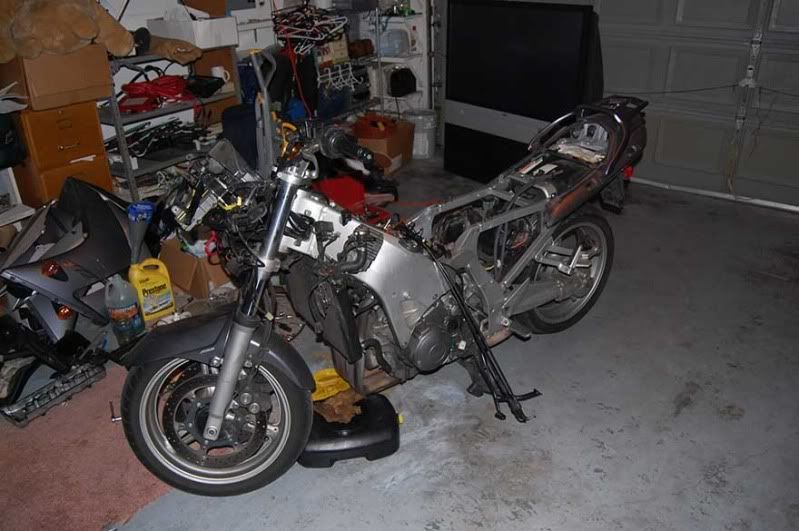
The cam chain will "whine" when running too tight.The question that remains in my brain is just how tight to adjust the chain. When I install mine I plan on picking a spot for installation and then start the engine and back it off until I hear noise and then tighten it up until quiet and then a bit more to preload the spring. I think I will mark it after I lock it in place and record how much preload it took and compare that when adjusting a few thousand miles later.
I guess nobody will know until the first few are installed and we see if it explodes or stays together and then find out how long between adjustments.
Better? Unknown at this point since we have no data on how well a manual adjuster will work. Every 20k is probably overkill, but I did have one go south at only a little more than that, with the original lasting 60k or so before becoming noisy. Perhaps every 30-40k might be more reasonable, unless noise becomes apparent.Just to ask the question, would it simply be better to replace the OEM unit every 20k miles? Pre-planned maintenance? Hell, one tire costs more than a CCT..
Don, I was thinking the same thing. Perhaps at the 26K service? Does it make any sense to go ahead and also change the chain while you are at it? I guess the downsides are:Just to ask the question, would it simply be better to replace the OEM unit every 20k miles? Pre-planned maintenance? Hell, one tire costs more than a CCT..
Enter your email address to join: